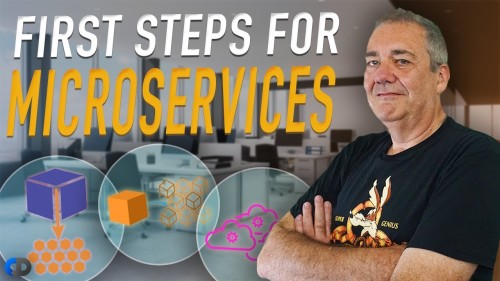
Begin With Microservices
Published 9/2024
Created by Nagasrinivasarao Dasari
MP4 | Video: h264, 1280×720 | Audio: AAC, 44.1 KHz, 2 Ch
Genre: eLearning | Language: English | Duration: 12 Lectures ( 1h 58m ) | Size: 953 MB
What you’ll learn:
Students can learn about microservices and its features and operations. Students also can experience hands on examples.
After completing the course students can proceed to create micro services using CURD operations and other services and functionalities.
Students or software developers can implement microservices solutions in various API based projects.
Before learning Microservices it is better to have minimal knowledge in java.
Requirements:
Prior java experience is needed and little bit JSON / Mongo DB knowledge needed.
Description:
In this course, you will learn how to build REST APIs or Microservices using the latest version of Spring Boot), and Mongo database.Spring Boot is basically an extension of the Spring framework which eliminated the boilerplate configurations required for setting up a Spring application.Spring Boot is an opinionated framework that helps developers build Spring-based applications quickly and easily. The main goal of Spring Boot is to quickly create Spring-based applications without requiring developers to write the same boilerplate configuration again and again.Microservices are an architectural style to building the system/application asA set of smaller business components that are autonomous, self-contained andLoosely coupled. Micro means small and service is webservice. After completing this student will become more comfortable to develop microservice based projects.Using this course students can learn about API Gateway’s, Eureka servers.Using this course students able to perform CURD operations.Using this course students will understand about various integrations.Using this course students can manage to download open source software’s and they will be able to setup environment setup for microservices.Evolution of microservice:-Many organizations such as Netflix, Amazon, and eBay successfully used the divide and conquer technique to functionality partition their monolithic applications into smaller atomic units, each performing a single function. These organization solved a number of issuethey were experiencing with their monolithic applications. Following the success of these organization, many other organizations started adoptingThis as a common pattern to refactor their monolithic applications.Purpose of microservice:Applications to achieve a high degree of agility, speed of delivery, and scalability
Who this course is for:
Someone who has already had knowledge in java, Advanced Java so that they can easily learn about micro services. Those who want to develop API services and microservices it would be more useful.
rapidgator.net/file/42ddc179cf9088996fea8f4badcce29d/Begin_with_Microservices.rar.html

